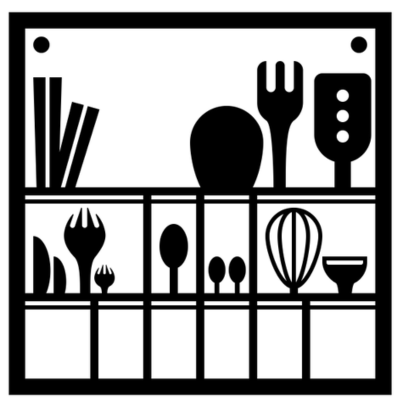The Best Chinese Roast Duck Recipe (Golden Crispy Skin + Restaurant Flavor!)
Rated 3.8 stars by 9 users
Author:
Souped Up Recipe
Servings
4
Prep Time
40 hours
Cook Time
70 minutes
After a lot of trial and error and taste-testing, I perfected this marinade, which will make your duck taste exactly like you got it from a Cantonese restaurant. With my secret glaze formula, your duck will have the crispiest skin and beautiful reddish-brown color, which will look just like the ones hanging in front of the roast shops in Chinatown. Imagine putting that on the table! You will get tons of compliments. This is a more elaborate dish, so it’s a good idea to read through the steps and ingredients before you begin to make sure you are prepared.

Ingredients
For the crispy glaze
- 12.5g / 1 Tbsp sugar
- 23g / 1 Tbsp maltose
- 85g / ⅓ cup vinegar
- 168g / ¾ cup Chinese cooking wine
For the spice blend
- 3.3g / 1 tsp black peppercorns
- 1.3g / 1 tsp whole Sichuan peppercorns
- 0.4g / about ½ of a star anise
- 0.4g / about 2 bay leaves
- 2.5g / about 1 cinnamon stick
- O.4g / about 1 slice dried gancao (licorice root)
- 0.8g / about 2 slices dried sand ginger
- 1g / 1 square inch aged tangerine peel
For seasoning the duck
- 11.4g / 2 tsps salt
- 8.3g / 2 tsps sugar
- 25g / 1.5 Tbsps soy sauce
- 21g / 1 Tbsps hoisin sauce
- 16g / 1 Tbsp zhuhou paste
- 20g / about 2 pieces fermented bean curd
For sautéeing the sweet onion
- 34g / 2.5 Tbsps cooking oil
- 280g / about 1 large sweet onion, diced
- 18g / 2 Tbsps minced garlic
- 15-18g / about 5-6 ginger slices
For stuffing the duck
- 1 whole duck, about 1.8kg / 4 pounds
- 15g / about 1 scallion
- 12g / about 6 cilantro leaves
- 1 metal skewer
- Electric portable air compressor with a nozzle adaptor
Directions
Make the crispy glaze
In a saucepan, add the sugar, maltose, vinegar, and Chinese cooking wine. Stir everything over medium heat until fully dissolved. Set it aside. This glaze will caramelize while roasting, giving the duck that desired reddish-brown color.
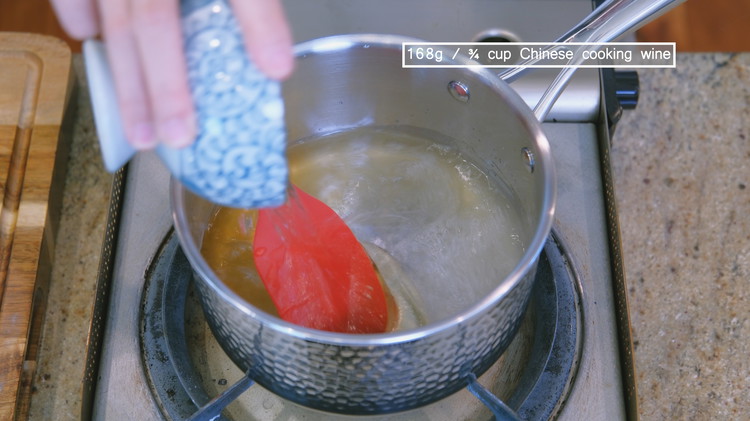
Make the spice blend and seasoning sauce
Toast the black peppercorns, Sichuan peppercorns, star anise, bay leaves, cinnamon stick, dried gancao (licorice root), dried sand ginger, and aged tangerine peel in the wok over low heat for 2 minutes.

- Blend the spices in a spice grinder until fine. Pour the mixture through a sieve to eliminate the stubborn pieces.
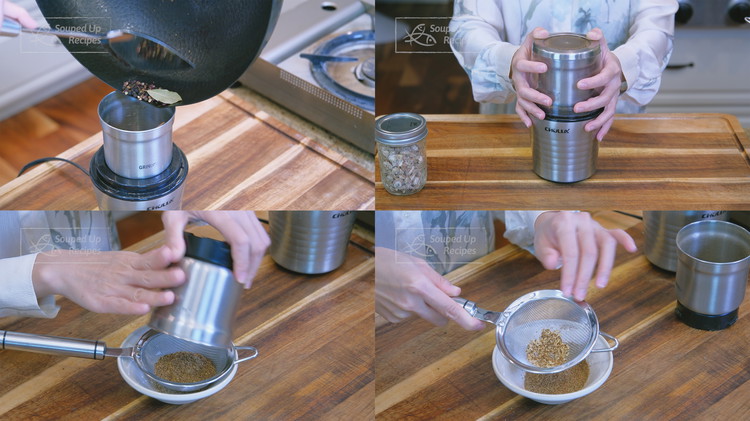
- In a bowl, thoroughly combine the salt, sugar, soy sauce, hoisin sauce, zhuhou paste, fermented bean curd, and the spice blend that you made previously. The measurements in this recipe apply to a 4-pound duck (weighed after removing the head, wings, feet, and inners); please adjust the amounts proportionally based on the weight of the duck you purchased.

Sauté the sweet onion
Add the oil, ginger slices, minced garlic, and diced sweet onion to a wok and sauté over medium-low heat until the onion is translucent.

- Put on the lid and cook the onions on the lowest heat until soft, about 5 minutes.

Remove the onions from the stove and set it aside. Chef’s Secret: Cantonese-style roasted duck is unique with onion soup inside, making it juicy and perfect for dipping over rice. The key to creating the onion soup is to sauté the onions before roasting, as the oven time isn't sufficient otherwise.
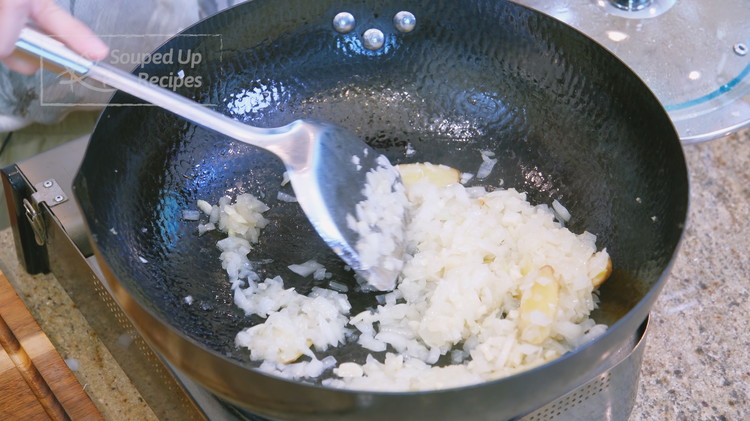
Season, stuff, and seal the duck
Once the duck is defrosted, cut off the head but keep the neck; remove the wing tips and the feet because they burn fast while roasting. Rinse the duck thoroughly.
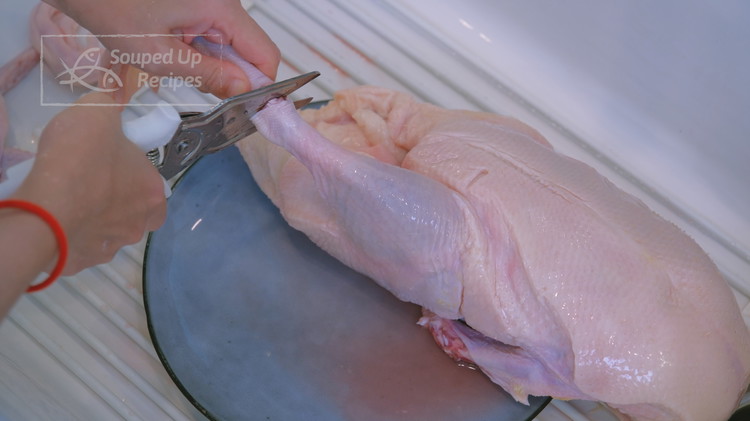
- Use paper towels to dab the excess moisture. Make sure you dry the cavity as well so it doesn’t dilute the sauce.
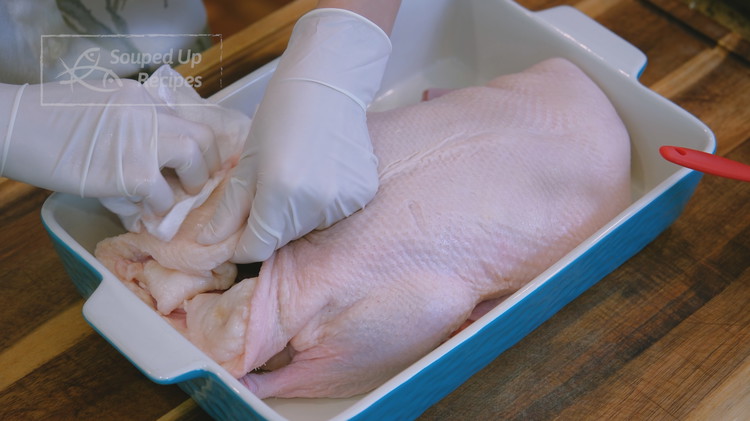
- Pour all the seasoning sauce into the duck cavity and rub it for a few minutes so that the flavor can deeply infuse into the flesh.

- Stuff the sautéed onion, scallion, and cilantro leaves into the cavity.
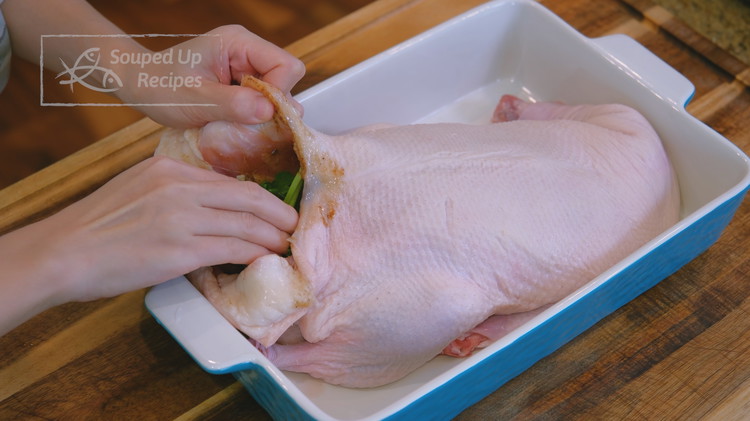
- The next step is to seal the duck. Grab the opening of the cavity and stick a metal skewer in, twisting it over tightly and stitching it in again. Repeat that step until there is no more opening. When you reach the end, stick the tip of the skewer into the cavity. Use a metal skewer, as a bamboo skewer may break.

Pump the duck
This is the most important step to ensure a crispy roasted duck. You will need an electric portable air compressor with a nozzle adaptor (see page 13). Wrap the tube and the nozzle with plastic film.
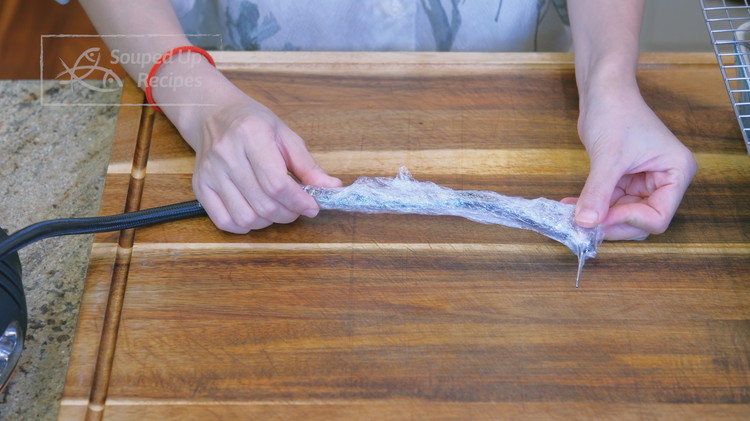
- Stick the nozzle into the duck neck under the skin and hold it tightly. pump air until the whole duck is inflated. During the process, you may find that the air is leaking through the cavity. Please use your other hand to hold the cavity as tight as possible so the duck can inflate more. You want to see the air filling up the space between the skin and flesh, allowing the fat to melt away during roasting.
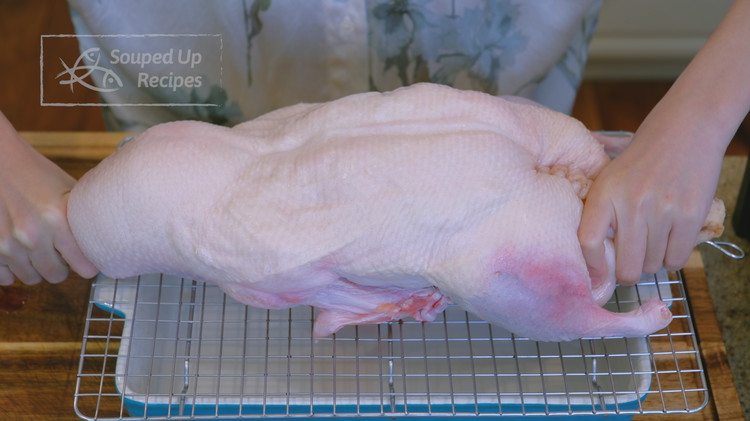
- Once done, tie the neck with kitchen twine to retain the air. Set the duck aside.

Blanch and glaze the duck
Fill a large pot with water and bring it to a boil over medium heat.
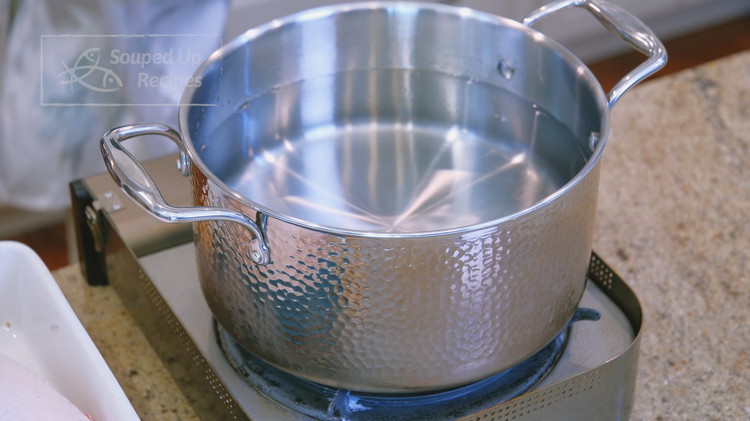
- Move the duck to the sink and place it on a rack, breast side up. Use a large cup to remove some hot water and pour it onto the skin. The heat will stretch the skin and make it tight and smooth.
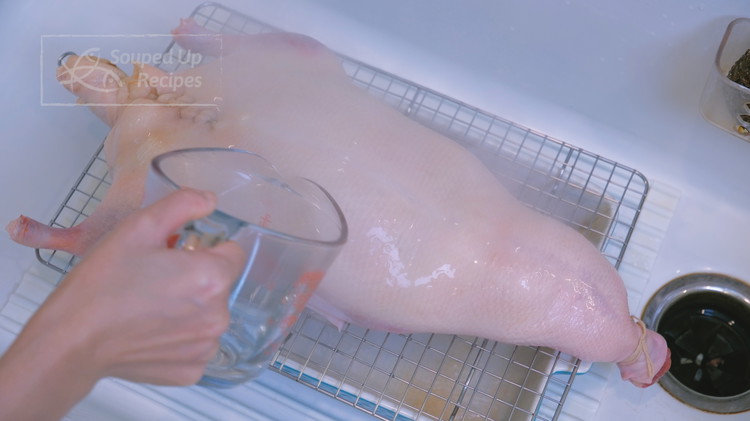
- When you are pouring water onto the back, grab the neck and try not to put pressure on the chest because you want to keep it nice and fluffy.
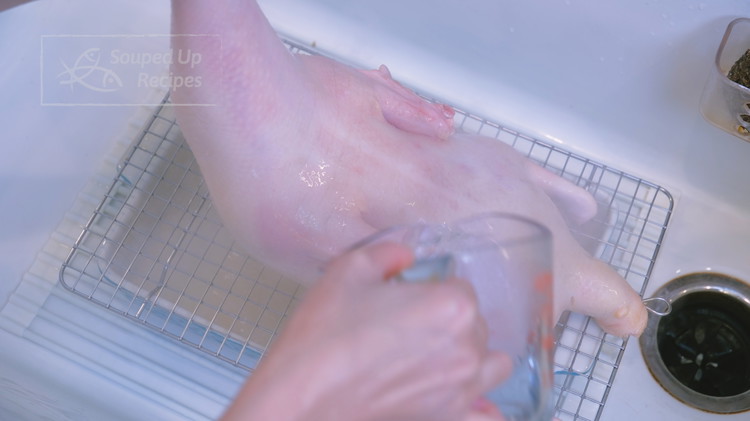
- Rinse the duck under running water to prevent it from overheating.
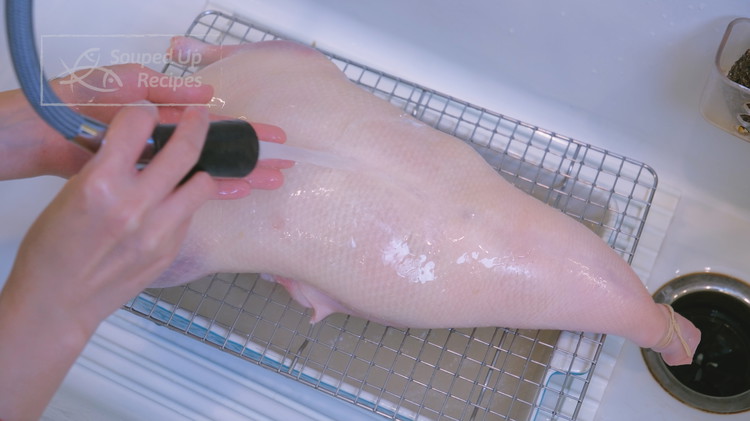
- Put the duck in a clean tray. Pour the crispy glaze all over the duck. Gently rub the glaze onto the duck to make sure every part of the skin is covered. Set aside.
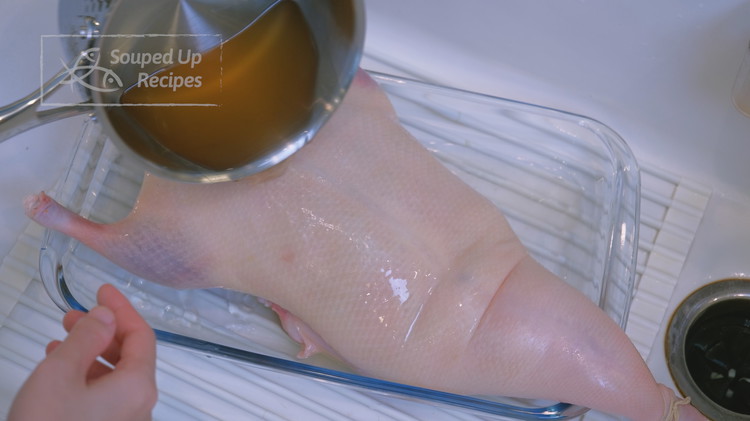
Dehydrate the duck
Place the duck onto a rack in a dehydrator; set the temperature to the lowest and dehydrate for 6 hours or until the skin becomes dry like plastic.
If you don't have a dehydrator, place the duck on a rack under a ceiling fan for 6 hours or until the skin becomes dry like plastic.

Roast and serve the duck
Preheat the oven to 360°F / 182°C.
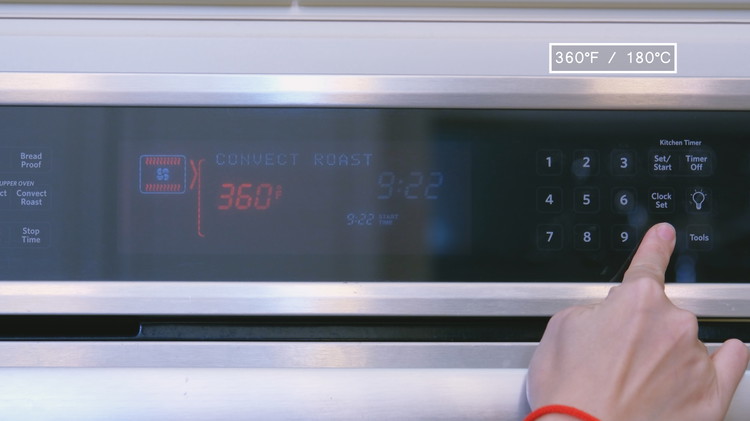
- Wrap the baking pan with tinfoil for easy cleaning. Place the duck on the baking rack, breast side up. Optionally, put an extra steamer rack under to lift the baking rack so there is plenty of space between the duck and the baking pan, allowing better air circulation.

- Roast the duck at 360 F for 20 minutes. The purpose is to allow the high heat to build to attain that beautiful golden-red color on the skin.
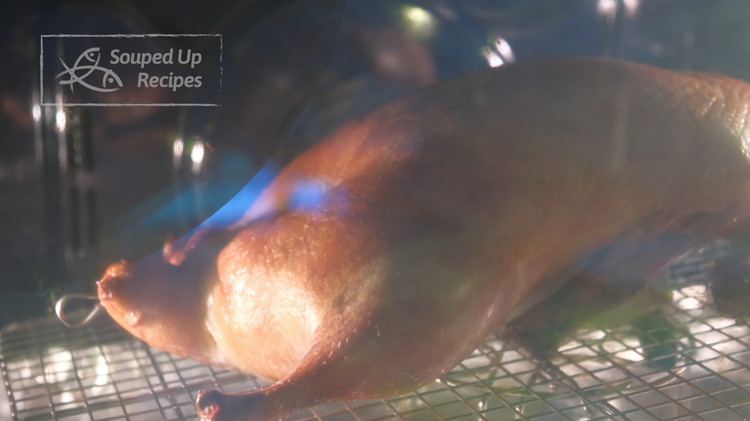
- Change the oven temperature to 320°F / 160°C, open the oven door for a few seconds to release some heat, and continue to bake for 50 minutes for a 4-pound duck. Add 15 more minutes for every extra pound. Every oven is different; please keep an eye on the duck and adjust the timing based on your own judgment.
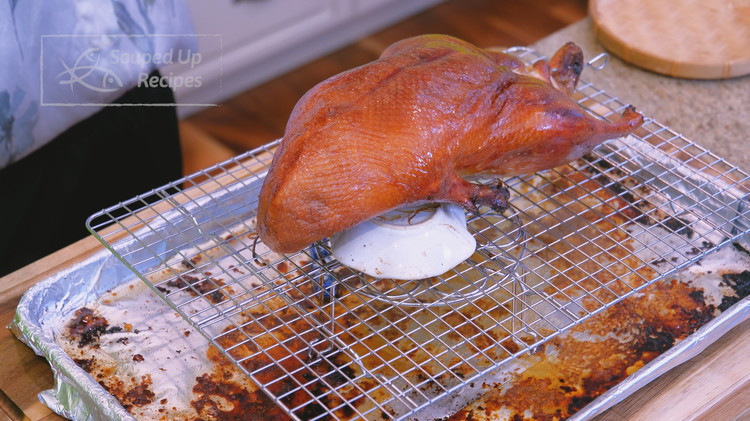
- If everything goes right, you will have a perfect, golden brown, crispy roasted duck. Before serving, pull the skewer out and drain all of the onion juice into a small bowl. Pour the onion juice through a strainer. You can use this sauce to drizzle over the duck and rice.
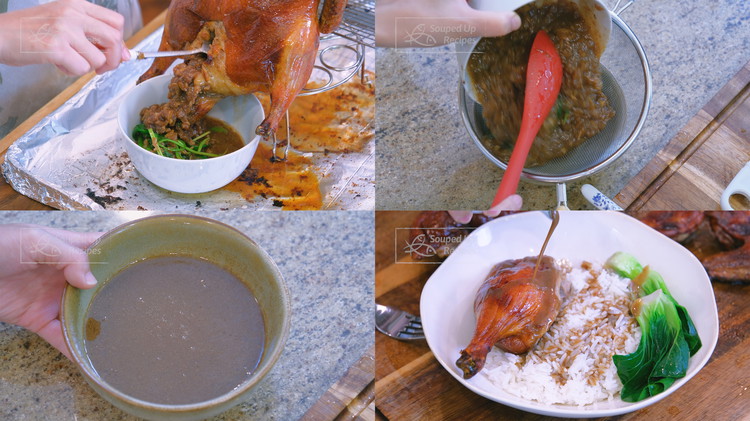
- Carve the duck and serve with white rice and blanched vegetables.
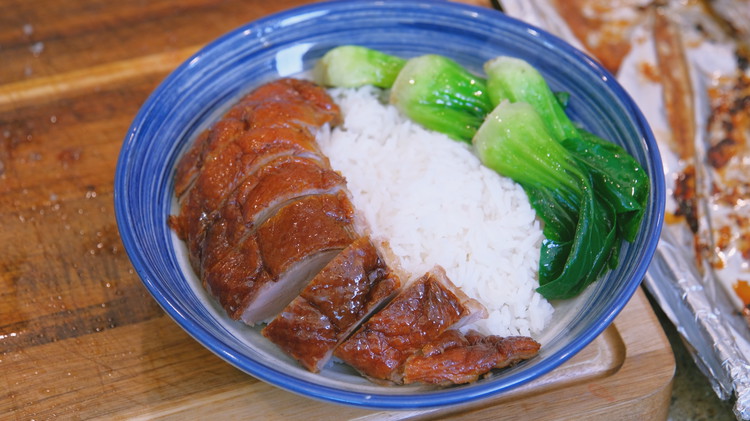
Recipe Video
Recipe Note
Ingredient Tips
- Maltose can be replaced by honey.
- Non-alcohol replacements for Chinese cooking wine vary from recipe to recipe. For this particular dish, you can use the same amount of water.
- The aged tangerine peel can be replaced by lemon zest.
- When buying a duck in an Asian market, you can choose one with or without the head. It's better to opt for the head-on duck because the headless one usually has the entire neck cut off, which affects the air-pumping process. It is like blowing a balloon; youneed to grip onto the long and narrow opening.
- If you have a frozen duck from the Asian market, defrost it in the refrigerator for at least 36 hours to ensure a safe and consistent thawing process.























































